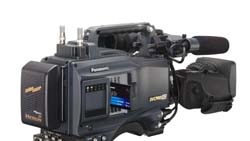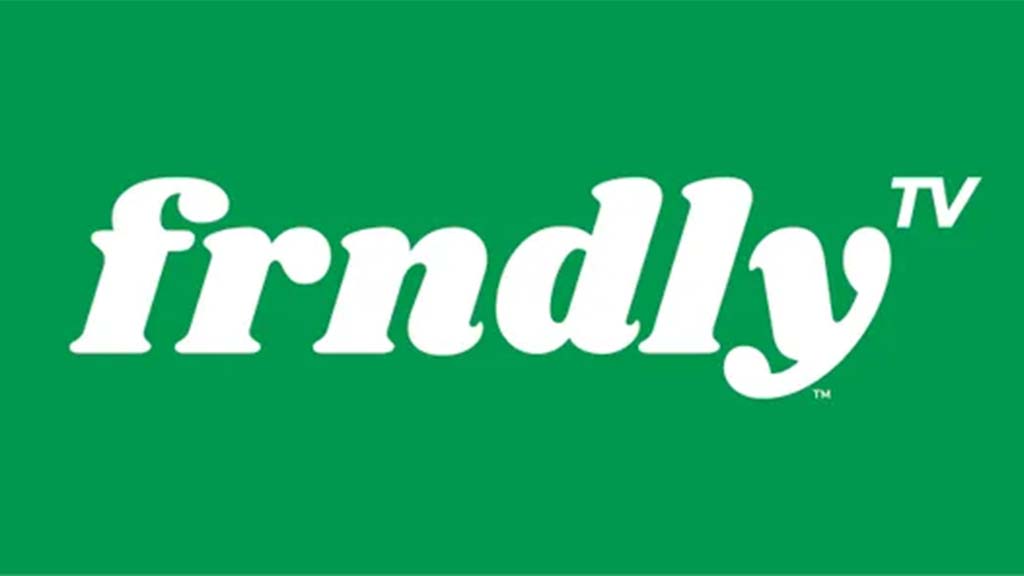Panasonic ING at NAB2004
While its sights are focused firmly on launching its new DVCPRO P2 series solid-state memory system, Panasonic Broadcast also continues to enhance its existing line of DVCPRO cameras and VTRs to meet the demands of new media professionals. The company has reported significant sales successes for its VariCam HD and SDX 900 SD cameras, as well as across all of its product lines (including plasma screens).

The AJ-SPX800 combines 2/3-inch 3-CCD camera with 24fps/30fps progressive and 60 fields interlace DVCPRO and DVCPRO50 format P2 card recording.
Production units of the Panasonic P2 IT News Gathering (ING) system will begin shipping in May, according to the company, including a five-slot camcorder (AJ-SPX800), studio VTR (AJ-DPD850) and five-slot external P2 card drive (AJ-PCD10) for DVCPRO or DVCPRO50 resolution data ingest. The drive also fits in a standard PC type 5.25-inch bay drive enclosure.
The P2 professional solid-state memory card leverages the PCMCIA form factor and each P2 card incorporates four 1 GB SD memory cards and a controller IC. With a 4GB P2 card, record capacity is 16 and 8 minutes with DVCPRO and DVCPRO50 (video, audio and metadata), respectively. Panasonic said the P2 card can be rewritten a minimum of 100,000 times without performance degradation and its connector will last for a minimum of 30,000 insertion and removal cycles.
The ING system’s random access functionality and ability to acquire footage and get it into an editor quickly was demonstrated for a group of editors last week at Panasonic’s Secaucus, N.J. headquarters. The demo operator shot live images, located them in the camera, selected specific clips and created an EDL inside the camera, transferred them for editing, and played out a finished piece within a matter of a few minutes.
The 2/3-inch CCD camera--which shares some of the attributes of Panasonic’s SDX-900 camera--also includes 2- or 4-channel audio modes, a voice memo function (clips can be created and transferred with voice annotation) and in-camera storyboarding.
The camera also support low-res proxy files (MPEG-1) for editing and MPEG-4 files for display on a handheld PDA. An optional wireless LAN card is available that enables a user to transmit digital image files over 802.11b protocol or via the Internet.
Get the TV Tech Newsletter
The professional video industry's #1 source for news, trends and product and tech information. Sign up below.
The P2 camera can hold five 4GB SD memory cards to store 80 minutes of DVCPRO (25 Mbps) or DVCPRO50 material. (Users should be aware that the stated capacity on the P2 card indicates raw data capacity. Formatted data capacity will be less.)
The product road map shows eventual support for 8-, 16- and 32GB cards to store HD and even 24p images, as they become available.
Tape-based DVCPRO still popular
Providing proof that its DVCPRO line continues to sell well, Panasonic will also introduce two new 12-bit DSP standard-definition cameras with built-in IEEE 1394 (FireWire) connectivity at NAB2004. The new data transfer feature enables a shooter to move images from the camera and into a nonlinear editing system, like Apple’s Final Cut Pro, accurately, reliably and quickly.
There’s a 480i/60 fps DVCPRO version (AJ-SDC615) that will be available in October and a DVCPRO50 model that ships in November. The latter (AJ-SDC905), Panasonic’s first dual-mode DVCPRO50 camera) includes the ability to select between EFP-quality 4:2:2 sampled DVCPRO50 or classic 4:1:1 sampled DVCPRO recording, as well as a six second (RAM) pre-record to ensure against missed shots. Both cameras offer switchable aspect ratio (4:3/16:9) operation.
Plasma screens
Plasma screens continue to be a big part of Panasonic’s broadcast lineup, and the company said it will show a series of new modules that plug into the monitor and enable a user to set up an IP-based remotely controlled, digital signage network complete with scheduled updates of displayed images.
For more information visit www.panasonic.com/broadcast.
